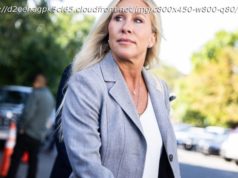Here’s a brief report card on Canada’s win and losses in the deal, now re-named the USMCA
Leaving a late-night cabinet meeting with a renegotiated North American trade deal in hand, Justin Trudeau announced it was a “good day for Canada” — and in the sense that months of uncertainty are finally over, he’s right.
But is the trade deal itself — now re-named the USMCA — good for Canada?
A year ago, Foreign Minister Chrystia Freeland announced Canada’s key demands going into negotiations with the Trump administration. That speech was an exercise in moderation compared to the U. S. demands that numbered more than 100 items, but still, Canada’s goals were ambitious.
Savvy negotiators will announce “demands” they’re prepared to abandon in exchange for concessions from the other side, so it’s unrealistic to expect Canada to have run the table on their asks — but it’s always worth keeping score.
Here’s a brief report card on Canada’s win and losses.
In what is widely seen as the key win for Canada, the dispute resolution processes (also known as Chapter 19) will remain intact.
Chapter 19 allowed Canada to challenge duties placed on Canadian exports at an expert panel with representatives from both countries. For example, Trudeau’s government asked for a Chapter 19 review of recent U. S. tariffs on softwood lumber and Bombardier aircraft and Canada has been consistently successful arguing its case at these panels. Without Chapter 19, these cases would be resolved in court in the country imposing the duties, so the U. S. would be arguing on home turf.
In trade negotiations, a big win usually requires some kind of concession and it appears that U. S. President Donald Trump was willing to back down on the dispute process in exchange for a little more access to Canada’s dairy market.
In the weeks leading up to Sunday’s deal, it became increasingly clear that Canada’s dairy farmers would be the ones taking a hit from the renegotiated trade deal. Canada had already granted concessions on dairy in the talks for the Trans-Pacific Partnership (which Trump subsequently pulled out of) and trade experts expected that to carry over to the new North American trade deal.
In the TPP talks, Canada had granted the U. S. access to 3.25 per cent of its dairy market and the USMCA bumps that up to 3.6 per cent. The Dairy Farmers of Canada immediately panned the move, saying it would have “a dramatic impact not only for dairy farmers but for the whole sector.”
Freeland has spoken at length about her goal that NAFTA “be made more progressive,” using CETA, the trade deal signed last year between the European Union and Canada, as an example.
Canada’s key demands were for the inclusion of a new chapter on labour safeguards, a chapter on environmental provisions, a chapter on gender rights and one on Indigenous issues. The result is a mixed bag.
The labour chapter has been brought into the core of the agreement, as well as one on the environment, but the text contains only brief mentions of Indigenous and gender rights, rather than dedicated chapters in the core agreement.
A year ago, Freeland specifically touted the labour and environmental chapters as necessary to ensure not just a free trade deal, but a “fair trade deal” for Canadians. Those are the two chapters that ended up in the new deal.
Canada was genuinely offended by recent steel and aluminum tariffs imposed by the United States under a national security provision and Freeland’s speech listed as a key object ensuring those tariffs are only applied “fairly when truly warranted.”
The USMCA now contains a provision that calls for a 60-day cooling off period on tariffs imposed for national security reasons. It won’t ensure it doesn’t eventually happen again, but it does allow for the two countries to talk through their differences for two months.
“In normal times, this wouldn’t be needed since national security is typically taken seriously by governments. Now, far less trust,” wrote University of Calgary economist Trevor Tombe.






